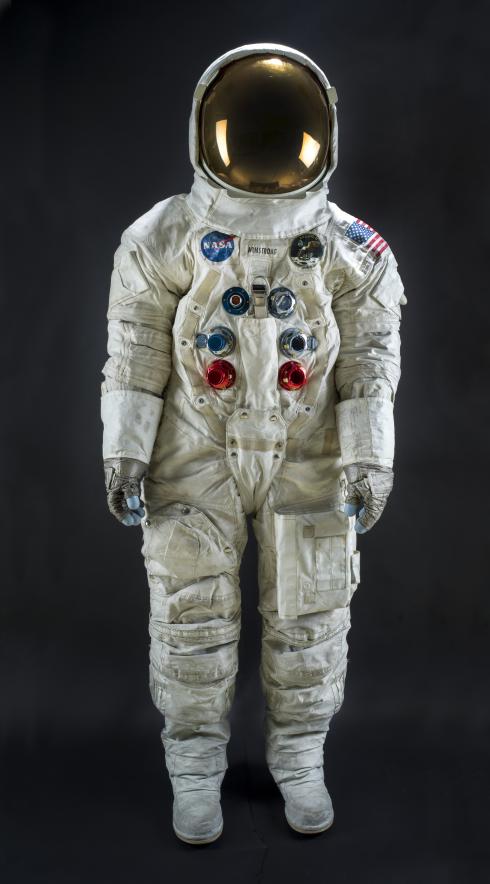
Media Inquiries
Public Inquiries
Museum Announces Additional Apollo Programming Details
The National Air and Space Museum will celebrate the 50th anniversary of the first moon landing with a five-day celebration at the museum and on the National Mall in Washington, D.C. From July 16, exactly 50 years from the launch of Apollo 11, to July 20, the day Neil Armstrong and Buzz Aldrin took the first steps on the moon, visitors can take part in celebrating this momentous milestone in history. A variety of educational and commemorative activities will take place throughout the week. Regular updates will be posted to the museum’s website.
Armstrong’s Apollo 11 spacesuit will go on display July 16 for the first time in 13 years. The suit conservation was funded by thousands of public donations through a Kickstarter campaign in 2015. A state-of-the-art display case and mannequin were created to help protect the fragile suit while on display. It will be temporarily displayed near the 1903 Wright Flyer until its future home, the “Destination Moon” exhibition, is completed in approximately 2022.
The museum will present “Discover the Moon Day!” Friday, July 19, a program of educational and fun family activities where visitors will be able to interact one-on-one with museum scientists to learn about lunar exploration, research and missions. They will see high-resolution images from the Lunar Reconnaissance Orbiter, view the moon in 3-D and more. They will also be able to start at the lunar module and “retrace” the astronauts’ steps, visiting stations along a route approximately equivalent to the distances the astronauts walked. The stations will be staffed by scientists and historians where visitors will see photos and maps of the area the astronauts traversed on the moon.
On the anniversary of the first steps on the moon, Saturday, July 20, the museum will host programming and educational activities. A celebration will culminate at the exact time (10:56 p.m. ET) the steps were taken that evening, and the public can visit the museum until 2 a.m.
Beginning in June, Smithsonian Channel will roll out programming celebrating the 50th anniversary of the moon landing. Apollo’s Moon Shot tells the entire story of America’s moon program through rare, newly restored archival film and unique access to the artifacts of Apollo. From John Glenn’s camera to Apollo 11’s command module to the last space boots on the moon—still covered in lunar dust—the six-hour series reveals the stories of the men and women who made the mission possible. In-depth explorations of astronaut artifacts from the museum’s vaults form an intimate connection between the viewer and the men on the face of the moon.
The Day We Walked on the Moon unfolds with a minute-by-minute description of those 24 hours when humanity first stepped on to the moon—told by the people who witnessed it. Astronauts, members of Mission Control and the children of Neil Armstrong and Buzz Aldrin reveal their personal stories behind the scenes of the iconic day. It is a story that ranges from the deeply personal to the grand and historic, an in-depth look at one of the most important 24-hour periods in history.
For more information about all of the museum’s Apollo anniversary plans and Apollo historical content, visit https://airandspace.si.edu/apollo50.
Support for the museum’s Apollo 50th-anniversary programming is provided by Boeing with additional support from Raytheon.
The National Air and Space Museum in Washington, D.C., is located at Sixth Street and Independence Avenue S.W. Washington, D.C. The Steven F. Udvar-Hazy Center is located in Chantilly, Virginia, near Washington Dulles International Airport. Both facilities are open daily from 10 a.m. until 5:30 p.m. (closed Dec. 25). Admission is free, but there is a $15 fee for parking at the Udvar-Hazy Center.
# # #